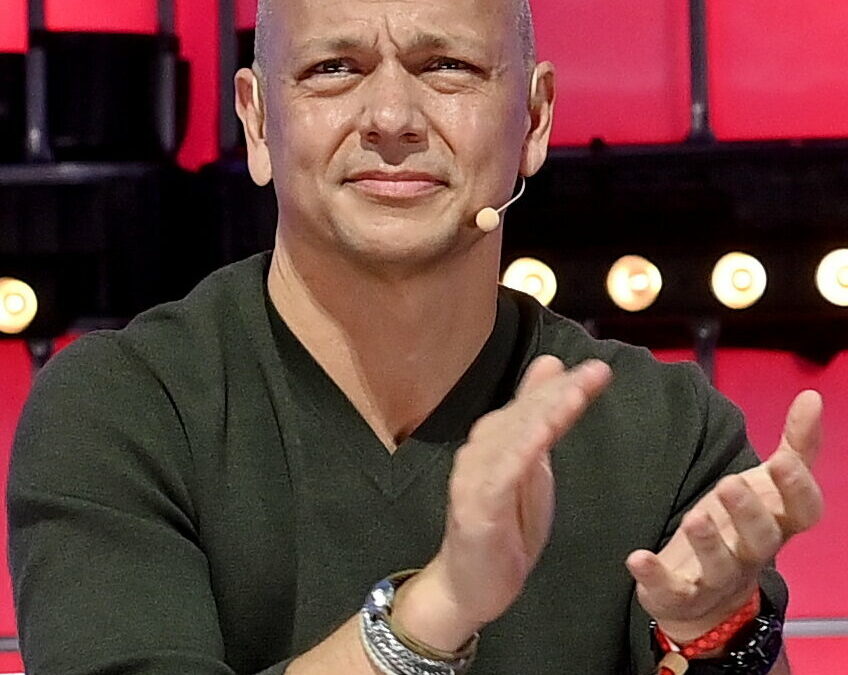Tony Fadell parlayed a childhood fascination with computers into a career that saw him develop some of the most influential tech devices of all time. The “father of the iPod” and a co-inventor of the iPhone and Nest Learning Thermostat, Fadell spent his early career working at innovative tech firm General Magic and designing several other ahead-of-their-time mobile devices.
Early Life and Education
Anthony Michael Fadell was born on March 22, 1969, in Michigan. He is of Lebanese descent on his father’s side and Polish descent on his mother’s. As a youth, Fadell lived an itinerant life, frequently moving with his family on account of his father’s job as a Levi Strauss sales executive.
At the age of 4, Fadell’s maternal grandfather taught him how to use tools to construct and reconstruct machinery and other objects. The experience resulted in a lifelong fascination with how things work. At age 12, he similarly became fascinated with computers, reading computer magazines like Macworld and saving money from his job as a local golf caddy to buy an Apple II.
Fadell graduated from high school in Grosse Pointe, Michigan, and went on to attend the University of Michigan. A computer engineering major, he founded multiple businesses before graduating with a bachelor of science in 1991.
General Magic
Fadell had a longstanding interest in working with the inventors of the Macintosh computer. After graduating, he moved to California, where he landed a job with General Magic, a company whose staff included several former members of the Apple team that created the Macintosh.
General Magic, which began as a division of Apple before becoming an independent company, developed several products that were ahead of their time. Among these was the Walkabout, a mobile device Fadell worked on that preceded the iPhone by 15 years. His and the General Magic’s other projects included the Motorola Envoy and the Sony Magic Link.
Unfortunately for General Magic, there wasn’t yet a market in the ’90s for such devices. Despite the company’s lasting influence, it eventually failed, ceasing operations entirely in 2002.
Developing Other Mobile Products
Fadell was long gone from General Magic by that point, having left in 1995 to found the Mobile Computing Group at Philips Electronics. Serving as chief technology officer, he guided the development of the Velo and Nino PDAs (personal digital assistants).
Despite the Velo and Nino winning awards, Philips did not market the early mobile devices sufficiently, and they failed to catch on. After a 14-month stint working on Philips’ digital media strategy, Fadell left the company to establish Fuse.
It was at this startup that Fadell merged his expertise as a mobile device developer with his passion for music to create a portable music player. Unfortunately for Fadell, he had established Fuse shortly before the tech bubble burst in the early 2000s. With potential funding sources drying up, Fadell couldn’t find financing for the music player, and Fuse folded in 2001.
Apple
Fuse’s failure proved to be a boon for Steve Jobs and Apple. After Fuse’s demise, Fadell presented his design to Apple while working as a contractor for the company. Apple CEO Steve Jobs, who was also looking to launch a portable music player, was impressed enough with the idea that he offered Fadell a full-time position as head of the newly launched Special Projects Group.
The Special Projects Group was where Fadell realized his vision of launching a portable music player. The music player was the iPod, a device that fundamentally changed the music industry. Fadell, who went on to be named senior vice president of Apple’s iPod division, oversaw the development of the music player’s first 18 generations.
During this time, Apple and Jobs decided to launch a mobile phone. According to Fadell, Jobs envisioned adding phone-call capabilities to the existing iPod design. The project stalled until Fadell and his team reimagined the product as a phone that incorporated the iPod functionality. The idea was a winner. With Fadell and his fellow developer’s design, the iPhone launched in 2007, and Fadell oversaw its first three generations.
Despite their success together, Fadell and Jobs had a sometimes-fractious working relationship. Once rumored to be a successor to the Apple CEO, Fadell instead resigned from his full-time role at Apple in 2008 and left the company entirely in 2010.
Nest
After a period of international traveling following his Apple exit, Fadell and his wife decided to build a home for their family in Lake Tahoe. Frustrated by the lack of modern thermostats on the market, Fadell joined with a former Apple colleague, Matt Rogers, to establish Nest Labs in 2010.
With Fadell leading as CEO, Nest developed the Nest Learning Thermostat. Released in the fall of 2011, the product conserves energy by learning and adjusting to a homeowner’s preferences. The company, which subsequently introduced other products, including a smoke detector and security system, was so successful that Google bought it for $3.2 billion in 2014. The purchase instantly made Fadell a billionaire.
Current Ventures
Fadell remained with Nest for two years after its acquisition by Google. Since resigning in 2016, he has focused on leading Build Collective (formerly Future Shape), a firm through which he advises and invests in startups. He has partnered with countless companies, including Impossible Foods, a leading developer of plant-based meat products.
A serial inventor, Fadell holds more than 300 patents. In 2016, TIME magazine included three of his inventions—the iPod, iPhone, and Nest Learning Thermostat—on its list of the 50 Most Influential Gadgets of All Time. In 2020, Fadell discussed his life and career philosophy in the bestselling memoir Build: An Unorthodox Guide to Making Things Worth Making.

